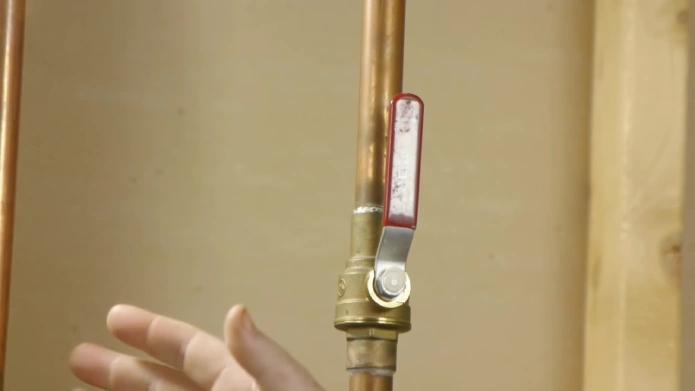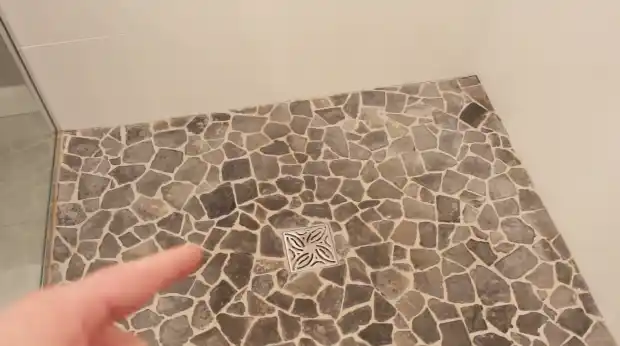Last Updated on May 7, 2023
Sump pumps are a vital component of many households, as they help to ensure basements remain dry and free from flooding. But should you seal the pump basin with a cover?
Secure your home against water damage and hazardous radon gas with a gas-tight sump pump cover. Defend the interior from mold growth, musty odors, pest infestations, and other soil gasses threatening your safety.
Proper sealing allows you to create an effective line of defense for your family’s safety. Don’t wait until a problem arises. Give yourself peace of mind knowing that you protect your and your loved ones’ wellbeing. Let’s explore how sealed covers protect your investment and prevent expensive repairs.
Why Should Sump Pump Cover be Sealed?

Keep your home safe and dry by properly sealing and protecting a sump pump cover. This simple maintenance step is essential in preventing costly water damage to your house.
1. Keep Moisture Out:
Sealing a sump basin cover also keeps moisture out of your home or basement by creating an airtight seal. This prevents musty smells from developing in the area and mold growth which can be hazardous to health.
Additionally, sealing a sump pump pit prevents humidity levels from rising too high and causing condensation issues which could lead to extensive water damage over time.
2. Protect Against Radon and Other Soil Gases:
A sump pump pit cover prevents radon from entering your home through cracks or seams in the foundation walls or floor joints. Radon is a naturally occurring gas that can be dangerous for your health when left unchecked.
Radon gas is odorless and colorless but has been linked to lung cancer when exposed over long periods at high concentrations. By sealing the sump pump cover, you can help prevent radon from seeping into your basement through the sump pump system.
Other soil gases, such as methane and carbon dioxide, can enter the home through an unsealed sump pump cover. Sealing it will help keep these gasses out, ensuring they don’t contribute to poor air quality in your home or cause health risks.
3. Control Musty Odors
Musty odors from excessive moisture buildup are among homeowners’ most common issues with a basement or crawl space. These odors make living conditions unpleasant and pose health risks due to airborne bacteria present in moist environments.
All cracks and openings around a sump pump must be adequately sealed off so that no moisture can get inside. Doing so will eliminate musty odors quickly and help keep your family safe from potential health risks associated with dampness.
4. Protect Against Pests:
In addition to preventing damaging moisture build-up, sealing the sump pit cover can help protect against bugs, rodents, and other pests. Odor makes its way into your home through small openings or crevices in the floor joints and foundation walls around the perimeter of your house.
Pests can cause serious damage if left unchecked, so ensuring all potential entryways are secured with an appropriate sealant is critical for long-term protection against them.
5. Prevent Water Damage:
Sealing the sump pump cover is essential for preventing water damage in homes with sump pumps. A sealed cover prevents water from leaking into your basement or other areas of your home, which can lead to significant structural damage if left unchecked.
Any gaps or openings around your sump pump cover can allow pests such as mice or insects to enter your home. Sealing them off will help you avoid any pest problems as well.
It’s also important to ensure that any connections between pipes and fittings around the sump pump are properly sealed to prevent leakage. Even small amounts of water can cause serious long-term damage if not caught early on.
6. Improve Efficiency:
By properly sealing a sump pump basin cover, you’ll be able to ensure that it operates efficiently by not allowing air bubbles or leaks that could potentially impede its performance. Having an effectively sealed unit with a sump dome will allow the air pressure inside it to remain constant.
It allows more efficient operation when compared to units with open seams or other gaps where air can escape. This decreases performance capabilities over time due to lower air pressure inside them than should normally be present.
What Features Should Have in the Best Sump Pump Cover?

To defend your home against unexpected flooding, we reviewed the best sump pump cover that can assist you. We’ve carefully evaluated the top-rated covers on the present market, highlighting each one’s standout features so that you can confidently select an ideal model.
In this section, we list two essential criteria for making your selection. Please do not overlook them when making your selection.
It’s important to ensure that it has a gas-tight lid when considering a sump pump cover. This will keep out any odors or fumes from contaminating your environment and prevent water from entering it, which can lead to flooding and other household damage.
The best covers will have a tight seal that won’t allow air or water to enter while allowing enough ventilation to keep your pump running efficiently. When selecting one, the material used to construct your sump pump cover is also essential.
Ensure that the material you choose is both strong and sturdy enough to withstand regular use and exposure to weather elements like rain and snow without wearing down or cracking over time. Good materials include Polyethylene Structural Foam, PVC plastic, or fiberglass reinforced plastic (FRP).
How Do You Seal a Sump Pump Cover?

Properly sealing a sump pump cover helps to keep unwanted water out of the area and protect the pump from damage. Here are 4 steps involved in sealing a sump pit cover.
Step 1: Preparing the Cover for Sealing
Preparing the surface is the first step in efficiently sealing a sump pump cover. Use a clean cloth to remove dirt, dust, and debris from both sides of the cover before attempting any sealing process. Ensure that all edges are flush with one another so that there are no gaps or openings where water could enter.
Step 2: Applying Caulk or Sealant
It is time to apply caulk or sealant around the edges of the sump pump cover. Select a product specifically designed for underwater use and read all safety instructions before beginning work.
Carefully fill any gaps or spaces between pieces with sealant and smooth out as necessary with a putty knife or other appropriate tool. Allow ample time for drying before moving on to the next step in sealing your sump pump cover.
Step 3: Installing Gaskets
In addition to caulk or sealant, gaskets can also be used when sealing sump pump covers. Gaskets are typically made from rubber or plastic materials and should be applied after completing all other preparation.
Cut gasket material precisely to fit each side of the cover before securely installing them onto each edge with adhesive glue or tape as needed.
Step 4: Testing for Leaks
Testing your newly sealed sump pump cover for leaks is important before securing it into place permanently. Fill up a container with water and place it on top of your newly sealed lid. If any water seeps through, further adjustments may need to be made until no leaks are detected.
Why does smell get out from the sump pump basement?

A variety of factors typically cause the smell coming from the sump pump basement. If the sump pump pit is not covered with a gas-tight lid cover, sewer gas can escape and permeate through the air in one’s home.
If the sump pump has been left dry for too long, it can also lead to odor release. Other potential sources of foul smells in one’s home include floor cracks, wall holes, and floor drains.
Sealing foundation cracks and openings and installing a radon mitigation system to combat this issue is important. Proper ventilation can help reduce foul smell levels in the home.
Will sealing a sump pit reduce radon?
Sealing a sump pit with gas-tight materials can help mitigate radon levels in your living environment. This will prevent radon from entering living spaces and moisture buildup that could harm human health.
Does concrete sealer stop radon?
Concrete sealers cannot completely stop radon gas from entering your building through the foundation. They can help mitigate its presence by preventing it from passing through cracks or openings in your home’s living space.
Therefore, using concrete sealer alongside other methods, such as proper ventilation and installing a radon mitigation system, can help reduce exposure to harmful amounts of this gas.
Protect Your Home with a Sealed Sump Pump Cover
Having a sealed sump pump cover is an essential part of home maintenance that should be noticed. Not only will it protect your home from water damage, but it will also keep out moisture, pests, and dangerous soil gasses like radon.
Without these protections, you may be dealing with uncomfortable musty odors or even worse health problems due to mold growth. So don’t wait any longer. Take action today by sealing your sump pump cover.



